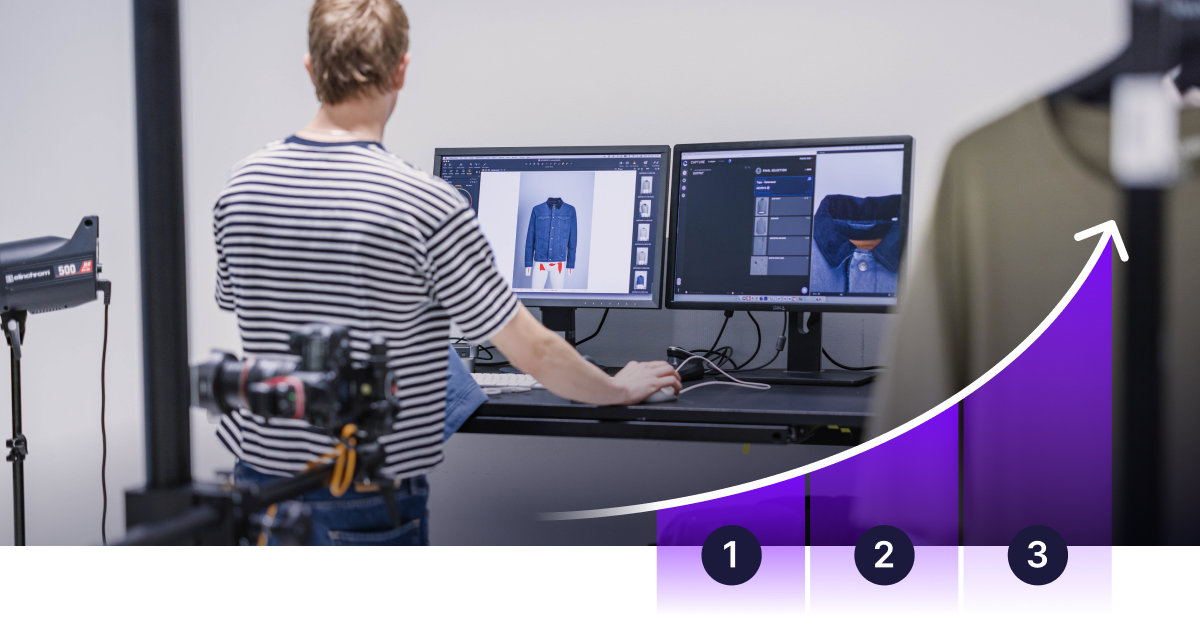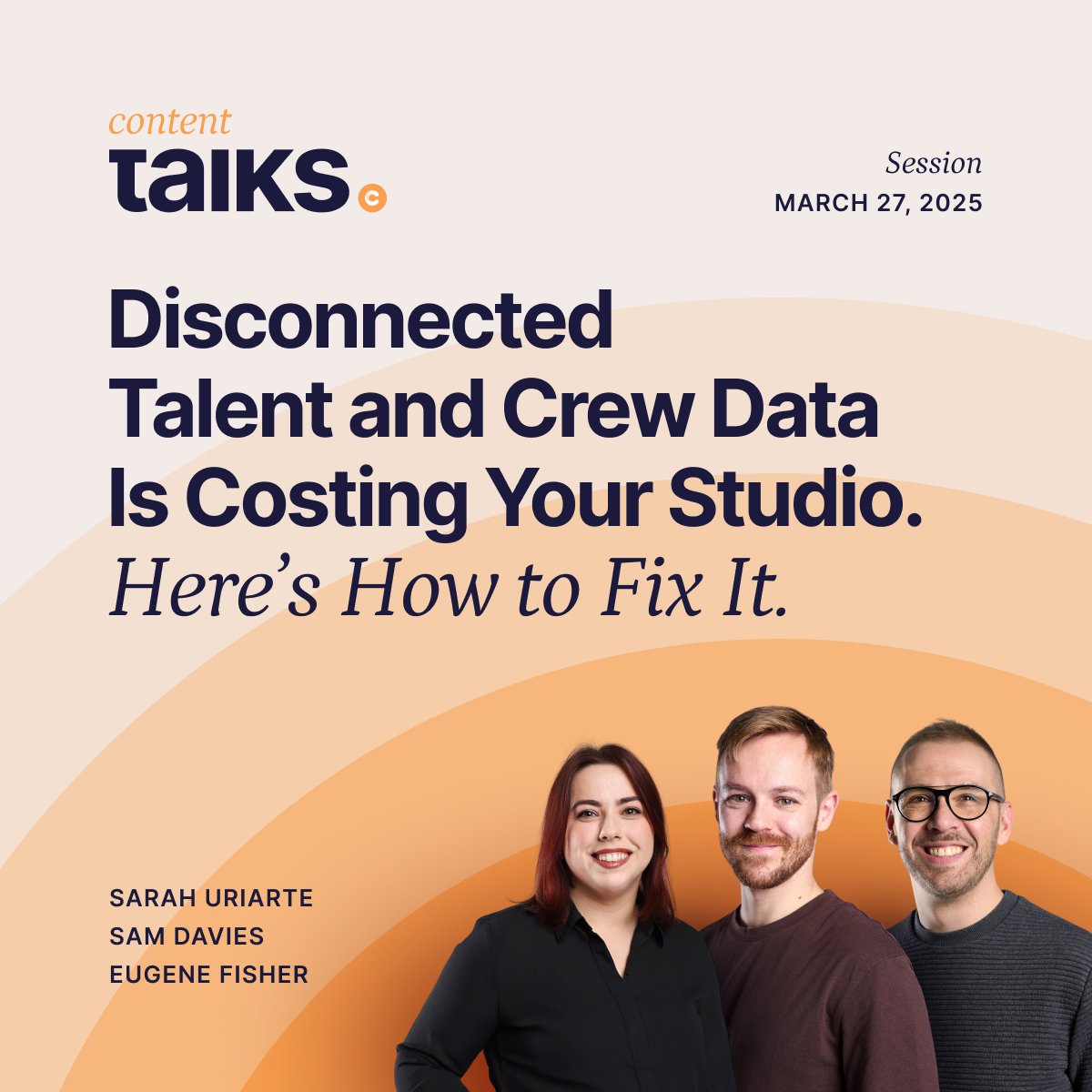Achieving Consistent Production Quality and Enhancing Efficiency

In this series, we’re offering a taste of some of the best practices and strategies featured in our Studio Maturity Reports. If you want to dive deeper into optimizing your studio's performance, we suggest taking our Studio Maturity Self-Assessment. This will provide you with a fully customized report analyzing your studio and outlining exactly what steps to take to advance your studio's operational maturity and unlock its full potential.
Production quality can be the silent killer of operational efficiency. Mistakes, assets needing to be re-produced, and post-production issues are inevitable. However, less mature studios often overlook the importance of optimizing the processes for correcting these issues and addressing the inefficiencies they cause.
But what does mature Production Quality in a content studio look like?
For insights, we turned to Kate Davies-Benadé. Whether at home, in the studio during her years as Head of Product Experience at BESTSELLER, or working directly with studio leaders as Director of Customer Experience Operations at Creative Force, few people are as passionate and tenacious as Kate about optimizing operations and ensuring consistent quality.
The first step towards Managed & Sustainable Production Quality involves defining and nailing down fundamental processes. This foundation is crucial for any studio striving to elevate its operational efficiency and overall performance.
Achieving Managed & Sustainable Production Quality
A critical factor in a studio’s production efficiency is its ability to produce quality assets consistently. No studio can claim optimized operational efficiency if it struggles with maintaining high-quality output. Occasionally, every studio produces assets needing rework. However, Reactive studios often handle rejections inefficiently, leading to operational waste.
“Most commonly with Reactive studios, there is no style guide, with quality standards shared by word-of-mouth. If style guides exist, they are so difficult to access that they aren’t used,” says Kate. “This results in stakeholders making subjective quality assessments, leading to inconsistent asset approval and rejection.”
This word-of-mouth approach to quality and style guidelines impacts studio efficiency in several ways. When everyone works with different interpretations of quality, it is almost impossible to optimize processes or identify the core reason for the art director's rejection of a photographer’s assets.

“When these Reactive studios don’t have clear style guides, the fundamental issues driving rejections are difficult to pin down,” says Kate. “Is the photographer producing low-quality assets? Is the Art Director semi-randomly rejecting images? Is it the Retoucher making mistakes, or is the person conducting quality control interpreting the quality expectations differently than everyone else? Each rejection almost becomes its own investigation, which causes much wasted time and frustration for everyone.”
And the Art Director catching and rejecting the images right away is the best-case scenario. When style guidelines are highly subjective, assets can make it far along in the production process before another stakeholder decides they have issues and need to be redone. It's those assets sent all the way back to the start of the production process that kills efficiency.
“If everyone understands the quality standards the same way throughout the production process, and there are quality checks all along the way, there is very little chance of incorrectly produced assets making it to the end of the workflow before being noticed.
Achieving an Optimized Technology Stack
We’re not going to lie: it’s tough to optimize the technology stack of a content production studio without a content production management platform like Creative Force.
Content production management platforms offer a single interface where every process is managed, operational data is collected, and other industry tools can seamlessly integrate. Achieving the rapid turnaround times of just a few hours, as many of our highest-performing customers do, without one is challenging. Add a Digital Asset Management (DAM) system and a Product Information Management (PIM) system, leveraging their APIs to ensure data flows end-to-end seamlessly, to the tech stack and that’s our definition of a studio that has invested in Optimizing its Studio Technology.
But when everyone interprets quality differently, you never know for sure what asset quality the production process will ultimately produce.”
For studios whose Production Quality is more Reactive, documentation, knowledge sharing, and training are the immediate steps.

“Quality and aesthetic standards for Photography and Post-Production need to be not only documented. They should include, at a minimum, ‘Good’ and ‘Bad’ visual examples and short text descriptions. Then, they need to be incorporated in the flow of everyone’s work, allowing everyone to reference as they execute their tasks.”
Calibration is also essential. With the style guides defined, Photographers and Art Directors should be brought together, shown sets of images, and asked to interpret their quality based on the style guides. This allows the group to calibrate how they interpret the style guides and further define what is “great” and what quality issues should result in an asset being rejected.
Achieving Optimized Production Quality
While it isn’t the only differentiator, data plays a critical role in studios achieving Optimized Production Quality. Using a tool like Creative Force or another method for collecting rejection information, optimized studios continuously bring teams together to review whose work is being rejected, who is rejecting, how long rejections take to fix, and the reasons behind them.
“This regular review of production quality is fundamentally what sets the highest, most consistent Production Quality,” says Kate. “They consistently gather different studio members to review quality data and identify where issues occur and why. This is made possible because they’ve also implemented next-level Production Quality practices like standardizing the feedback format, incorporating regular Quality Assurance steps, and collecting rejection feedback to allow for thorough analysis.”

The Optimization of Production Quality is where many components of our Studio Maturity Model come together. Optimized Ways of Working allow for effective communication of quality issues when assets are rejected. Optimized Studio Technology enables standardized rejection workflows and the capture of rejection data. Finally, Optimized Team Leader Collaboration and Studio Management facilitate effective data analysis and the implementation of changes to work processes when issues are identified.
By taking these steps, studios can transition from Reactive to Managed & Sustainable, consistently producing quality assets and, eventually, to Optimized Production Quality, ensuring greater efficiency and higher quality outputs throughout their production process. This journey involves improving documentation and communication and fostering a culture of continuous improvement and collaboration.
With a solid foundation, studios can better anticipate and address issues, streamline their workflows, and deliver exceptional results consistently. The path to Optimization may be challenging, but the rewards—enhanced productivity, reduced waste, and elevated creative output—make it a worthwhile investment for any content production studio.
Want more of our best practices and strategies for taking your Ways of Working to the next level? Take our Studio Maturity Self-Assessment to receive a customized report outlining the exact steps needed to advance your studio's operational maturity and unlock its full potential.








